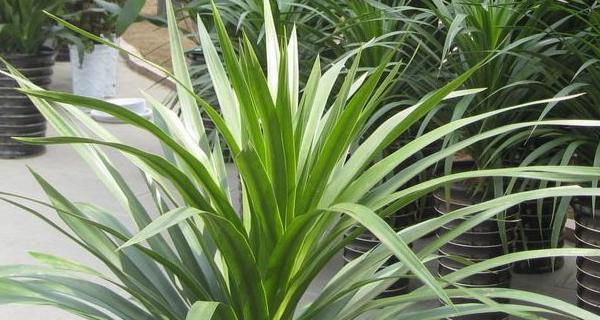How should we prevent the death of flowers in winter?

How should we prevent flower death in winter?
In winter, because many flowers have to go into indoor care, flowers are dormant and semi-dormant. In this case, if the flowers are not managed properly, it will lead to death. The specific preventive measures are as follows:
1. Watering should be appropriate: most flowers enter dormancy in winter and stop growing. Watering should be controlled, but it does not mean that they are not watered. Because the roots of flowers are still breathing slowly, they still need a certain amount of water supply, but the amount is relatively small. In addition, evaporation and transpiration are small, so it can be watered for a long time. The principle is not dry, no watering, watering thoroughly, and watering at noon in winter. Don't make too much difference between the water temperature and the basin temperature. Rain Water, well water, river water and tap water can all be used. if there is a big difference between water temperature and air temperature, you can first store water in tanks, buckets and other containers for a period of time. Generally speaking, it is suitable to be watered once every 5-7 days.
two。 Avoid low temperature at night: the higher the temperature in the daytime, the more harmful the low temperature at night. Move the flowers to the inside at night, or cover them with plastic film.
3. Timely adjustment of lighting: flowers in corridors, corners of the room and other places with insufficient light should be regularly changed and often moved to places where there is plenty of sunshine.
4. Prevent frost: flowers placed on the windowsill are most vulnerable to frost damage. So don't put the flowerpot on the windowsill on a cold night and put the curtains down at the same time. If there is a cold spell or frost in the weather forecast, and the room cannot be heated, move the flowerpot away from the windowsill.
5. Change indoor dry and hot air: in winter, due to indoor central heating or other reasons, indoor air humidity is generally low. Such environmental conditions are extremely disadvantageous to the growth of many indoor flowers, and some delicate flowers will even die in such an environment.
We should often spray water on flowers to increase its humidity, ensure the normal growth of flowers, and prevent the occurrence of its death.
1. Add mulch. At night, a small shed should be set up in the greenhouse and covered with straw curtains. Adding grass stalk or corn straw around the greenhouse at night can increase the temperature by 1 ℃ to 2 ℃. Adding a thin layer on top of the original grass can increase the greenhouse temperature by 2 ℃ to 3 ℃. Covering the original grass grass with a film can not only block the wind, but also prevent rain and snow from wetting the grass, thus reducing the heat loss caused by water evaporation. The flowers planted on the ground can also be covered with plastic film, and the soil temperature can be increased by more than 1 ℃ after mulching.
2. Smoke around. Before the cold spell comes, igniting smoke around the greenhouse can prevent the heat around the greenhouse from radiating to the high air and reduce the heat loss.
3. Clean the greenhouse film. Clean up the dust, dirt and snow on the greenhouse film in time, which can increase the light and raise the temperature of the greenhouse.
4. Covered with plastic film or small arch shed. The high ridge cultivation in the greenhouse can cover the high ridge with a layer of plastic film, which can generally increase the ground temperature by 2 ℃ to 3 ℃, while in the flat cultivation, a small arch greenhouse can be set up to increase the ground temperature.
5. Dig cold prevention ditch. Digging trenches on the south side of the outside of the greenhouse and filling in thermal insulation materials such as horse dung, weeds and straw can prevent the ground temperature from dissipating outward and increase the ground temperature in the south of the greenhouse.
6. Double film covering. Another layer of film is built under the non-dripping film, because there is air between the two layers, the temperature in the shed can be significantly increased.
7. Keep the pool warm. Dig a storage pool every few meters in the middle of the greenhouse, cover the bottom with plastic film, then fill it with water, and then cover the upper part of the pool with a transparent film (to prevent the moisture in the pool from evaporating and increasing the air humidity in the greenhouse). Because the specific heat of water is large, it can absorb heat at noon (at high temperature) and release heat at night.
8. Timely disclosure. When the temperature conditions permit, uncover the late cover as early as possible to promote the photosynthesis of flowers. In the deep winter, when the sun shines all over the shed in the morning on a sunny day, the temperature in the shed is generally not lower than 18 ℃. When the light is weak in cloudy or cloudy days, the grass should be opened in time so that the scattered light can enter, on the one hand, it can increase the temperature, on the other hand, because there is more blue-purple light in the scattered light, it is beneficial to photosynthesis. Do not uncover the grass for a long time, resulting in cold inside the shed and a sharp drop in temperature.
9. Apply more fertilizer. In the shed, horse dung, broken grass and other brewed heat were applied to raise the ground temperature. The decomposition of organic fertilizer can release heat, and the appropriate application of organic fertilizer and phosphorus and potassium fertilizer can not only improve soil aggregate structure, increase soil temperature, provide nutrients for flowers, but also enhance the frost resistance of flowers.
10. Hang a reflective screen. Hanging the polyester aluminized film on the north side of the greenhouse can increase the light in the greenhouse and increase the greenhouse temperature by 2 ℃ to 3 ℃.
11. Heating up. In case of extremely cold weather, you can add a stove or turn on the heating in the shed, but when using the stove to heat up, you should pay attention to prevent the poisoning of flower gas, install chimneys to output gas outside the shed, and be careful not to ignite firewood and grass in the shed to increase the temperature. because the smoke from burning firewood and grass is very harmful to flowers.
12. Scatter grass and wood ash. The plant ash is grayish black and has strong heat absorbing capacity. after it is evenly scattered on the ground of the greenhouse, the ground temperature can be increased by 1 ℃ to 2 ℃.
13. Spray antifreeze. Before cooling, spraying the stems and leaves of the plant with 400-700 times liquid of antifreeze can protect against cold and cold.
Related
- What if the leaves of potted flowers turn yellow?
- Florescence Control of several Flowers
- Anti-freezing technology and post-freezing nursing technology of flowers
- What is the classification of flowers? What are the common methods of flower classification?
- Prevention and control of alkali and acid damage of flowers in courtyard
- Technology of Anti-freezing and restoring growth of Flower seedlings in greenhouse and greenhouse
- How does flower fertilization not hurt the root? Fertilization technology of flowers
- Key points of disinfection in flower greenhouse
- Several pesticides that are banned or used cautiously in flowers
- How to fertilize the flowers that watch the leaves?



